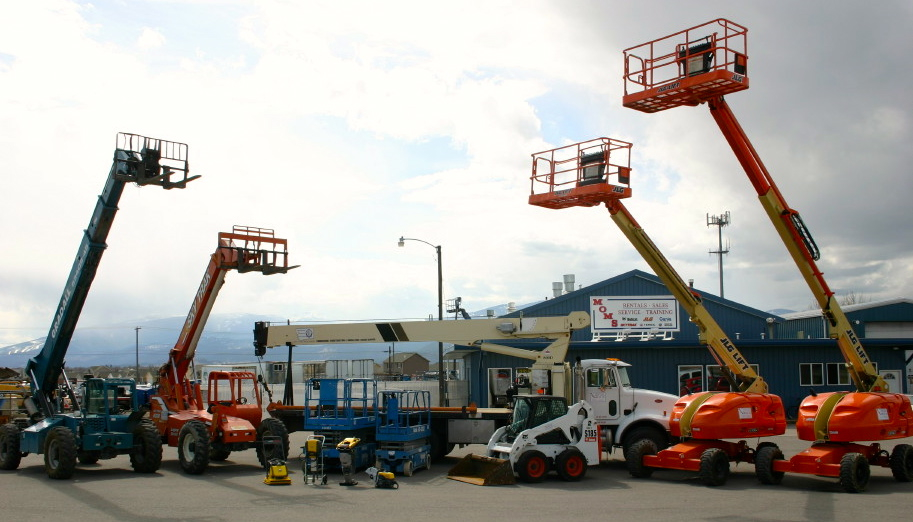Maximize Your Spending Plan by Understanding the Expenses Connected With Construction Equipment Services
Comprehending the full extent of prices connected with construction equipment leasings is critical for maximizing your budget plan. What strategies can be utilized to effectively handle these costs and ensure an extra efficient rental experience?
Review of Rental Costs
When thinking about construction equipment services, understanding the associated costs is paramount for efficient budgeting and job planning. Rental expenses can differ substantially based upon numerous variables, consisting of devices type, duration of rental, and place. The first rental cost often mirrors the tools's market need and its connected functional abilities, affecting the overall expense.
Along with the base rental rate, secondary expenses might develop, such as transportation fees, fuel surcharges, and maintenance fees. It is vital to represent these additional expenditures to accurately examine the total cost of leasing equipment. The rental period can affect rates; longer leasings may qualify for discounted rates, while short-term services may incur greater day-to-day costs.

Failure of Rental Prices
An extensive understanding of rental rates is crucial for professionals and project managers aiming to maximize their budgets. Rental rates for building and construction tools typically contain several elements, consisting of base prices, time-based costs, and usage costs.
Base prices are the core fees linked with the service of the equipment, typically figured out by the type and size of the equipment. These rates can vary dramatically, influenced by elements such as equipment need, availability, and regional market fads. Time-based costs, which might be daily, weekly, or monthly, offer to accommodate different task timelines and rental periods.
Furthermore, rental rates might consist of usage charges, which are suitable when equipment is made use of past a defined limit, making certain that the rental company can make up damage. Seasonal demand changes can also influence rental rates, with peak construction seasons generally regulating greater costs.
Furthermore, comprehending the rental company's policies relating to upkeep and insurance policy can provide more insight into the overall cost framework. By examining these parts, service providers can make educated choices, making sure the option of rental devices aligns with both job requirements and spending plan restrictions.
Additional Costs to Think About
Understanding the ins and outs of added fees is essential for service providers to handle their general leasing expenditures effectively. Past the standard rental prices, different supplemental charges can significantly affect the complete price of tools service. These costs often consist of distribution and pick-up charges, which can differ based on distance and logistics entailed in transferring the devices to and from the task website.
Additionally, some rental companies may enforce fuel surcharges if the devices is returned with much less fuel than when leased. It is additionally vital to understand prospective cleansing costs, particularly for specialized equipment that calls for extensive maintenance after usage.

Thoroughly examining the rental agreement and making clear these additional costs in advance can assist service providers avoid unanticipated costs and ensure that spending plans stay undamaged throughout the task lifecycle.
Repair And Maintenance Expenditures
Routine repair and maintenance expenses are usually overlooked elements that can significantly affect the overall expense of building devices rentals. When leasing tools, it is critical to consider not just the rental fees yet likewise the possible costs connected with maintaining the equipment in optimum operating problem.
Lots of rental firms consist of standard maintenance as part of the rental arrangement; nevertheless, extra substantial repair work or unanticipated breakdowns can result in added expenses. It's necessary to examine the rental agreement meticulously to understand what upkeep solutions are covered and what obligations fall on the tenant.
Moreover, tools that is not well-maintained can lead to inadequacies on duty website, possibly raising and creating delays task costs. To minimize these threats, it is advisable to conduct routine assessments and keep open interaction with the rental supplier pertaining to any concerns that emerge throughout usage.
Insurance Policy and Liability Expenses
Insurance coverage and obligation prices are vital components that can significantly impact the general cost of building and construction devices services (boom lift rental). These expenses ensure that both the rental business and the client are protected from prospective financial losses arising from accidents, damages, or burglary during the rental duration

In addition, customers ought to know any deductibles or exemptions in the insurance policy, as these can impact possible out-of-pocket expenses. Recognizing the conditions of any insurance policy protection is vital to avoid unexpected prices. Ultimately, budgeting for insurance policy and obligation expenses can aid guarantee a smoother rental experience and protect versus economic More hints dangers linked with building projects.
Verdict
Finally, an extensive understanding of the costs related to building devices leasings is important earthmovers and excavators for effective budget administration. By analyzing rental rates, additional costs, upkeep costs, and insurance policy demands, individuals and organizations can reduce unexpected expenses. This calculated method not just improves cost-effectiveness yet additionally makes certain that projects advance smoothly and efficiently. Eventually, educated decision-making pertaining to equipment rentals adds to the general success of building and construction undertakings.
Rental expenses can vary substantially based on several aspects, consisting of equipment kind, duration of leasing, and place (aerial lift rental). The rental period can influence prices; longer services might certify for reduced rates, while short-term leasings may sustain greater daily costs
By performing comprehensive study and engaging with trustworthy rental companies, professionals can effectively navigate the complexities of rental pricing, inevitably maximizing their financial resources.
Beyond the conventional rental prices, different extra fees can dramatically influence the complete price of tools rental. Rental business typically provide liability insurance that covers injuries to 3rd parties or damage to residential or commercial property, while equipment damage insurance policy can cover the cost of repair services or substitute if the rented equipment is damaged.